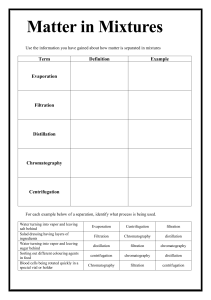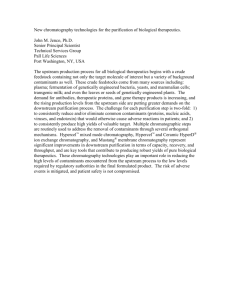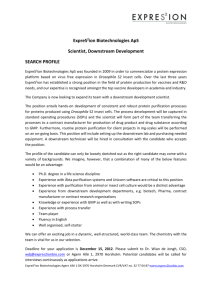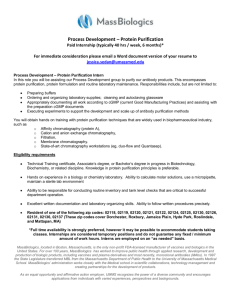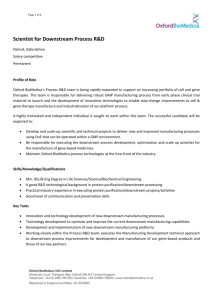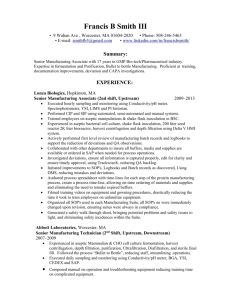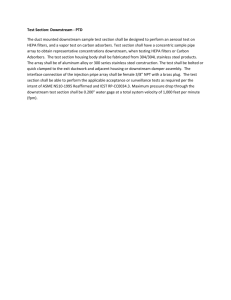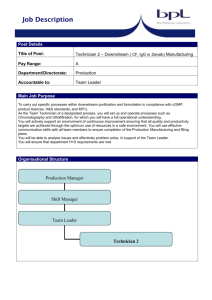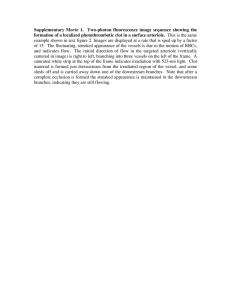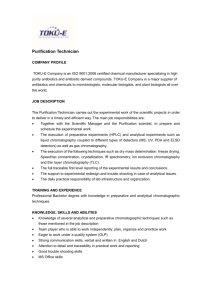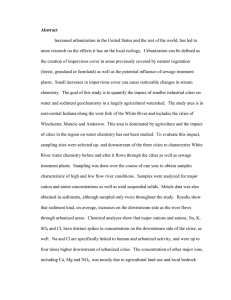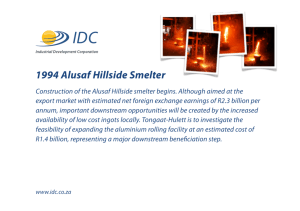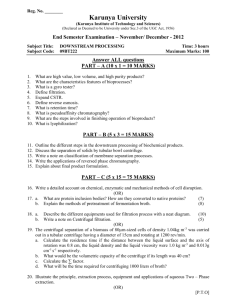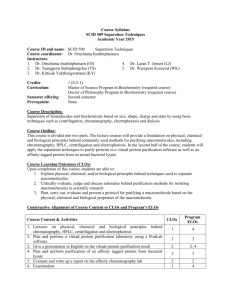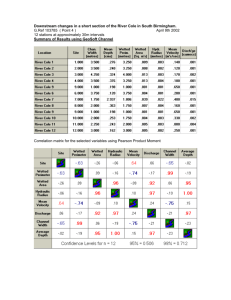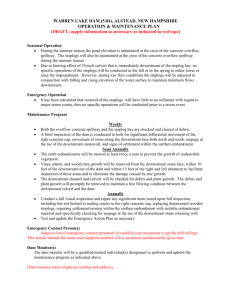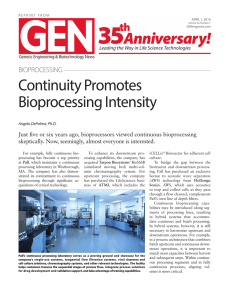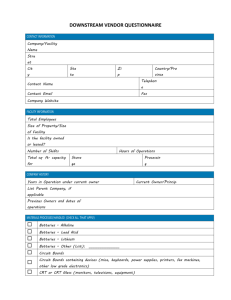Downstream Processing
advertisement
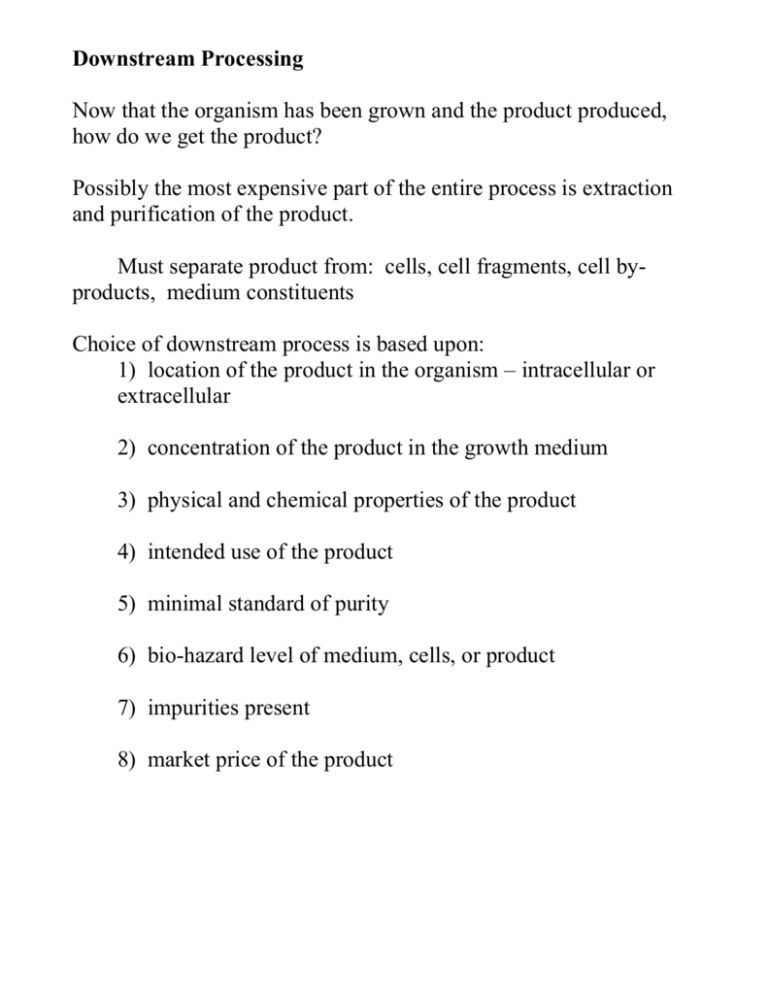
Downstream Processing Now that the organism has been grown and the product produced, how do we get the product? Possibly the most expensive part of the entire process is extraction and purification of the product. Must separate product from: cells, cell fragments, cell byproducts, medium constituents Choice of downstream process is based upon: 1) location of the product in the organism – intracellular or extracellular 2) concentration of the product in the growth medium 3) physical and chemical properties of the product 4) intended use of the product 5) minimal standard of purity 6) bio-hazard level of medium, cells, or product 7) impurities present 8) market price of the product One can modify the upstream processes to aid in downstream purification by: 1) selection of organisms that do not produce undesirable pigments or metabolites 2) modify the fermentation conditions so that undesirables are not produced 3) precise timing of harvest 4) pH control after harvesting 5) temperature control after harvest 6) addition of flocculating agents 7) addition of antifoams that do not cause purification problems 8) use of lytic enzymes to aid in cell wall disruption Unit operations in downstream processing are individual processes that operate separately from each other. Optimization of downstream processing costs can be achieved by as much integration of unit operations. Cell separation flocculation centrifugation filtration Cell disruption homogenizers hydrolytic enzymes Clarification centrifugation filtration Concentration precipitation chromatography ultrafiltration partitioning distillation High resolution techniques chromatography electrophoresis dialysis Finishing/packaging crystallization filtration gel chromatography drying


